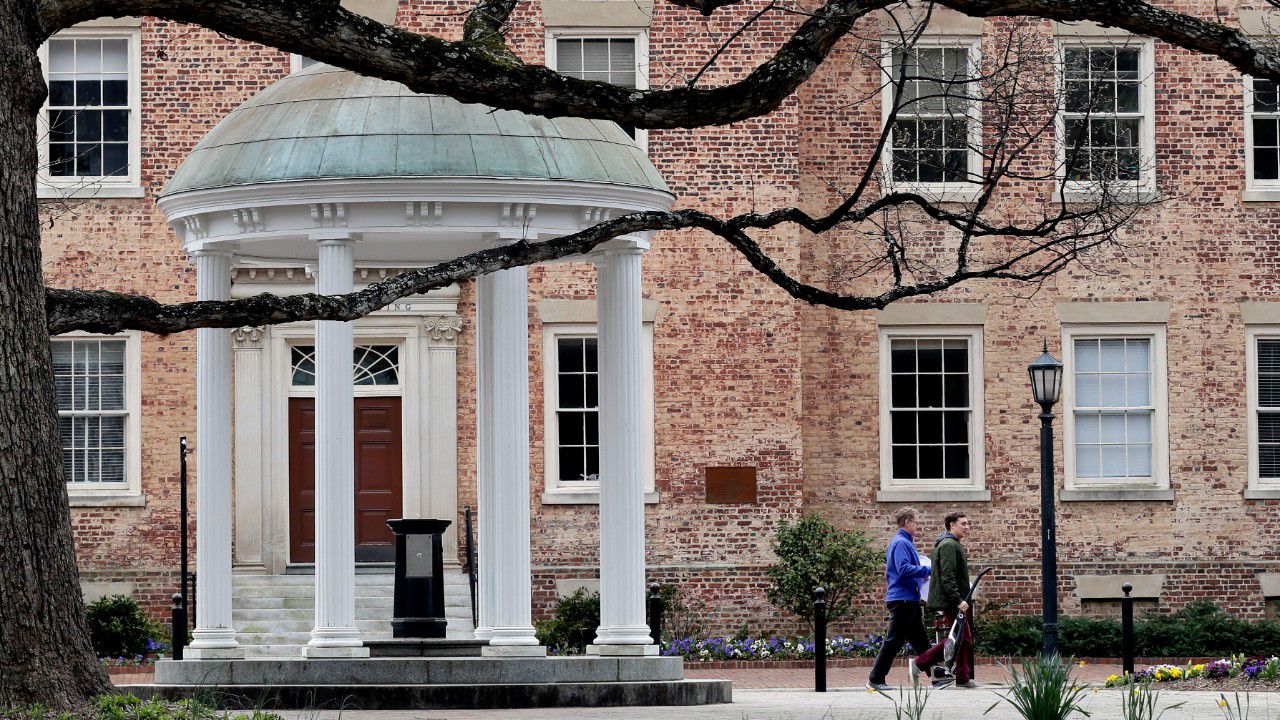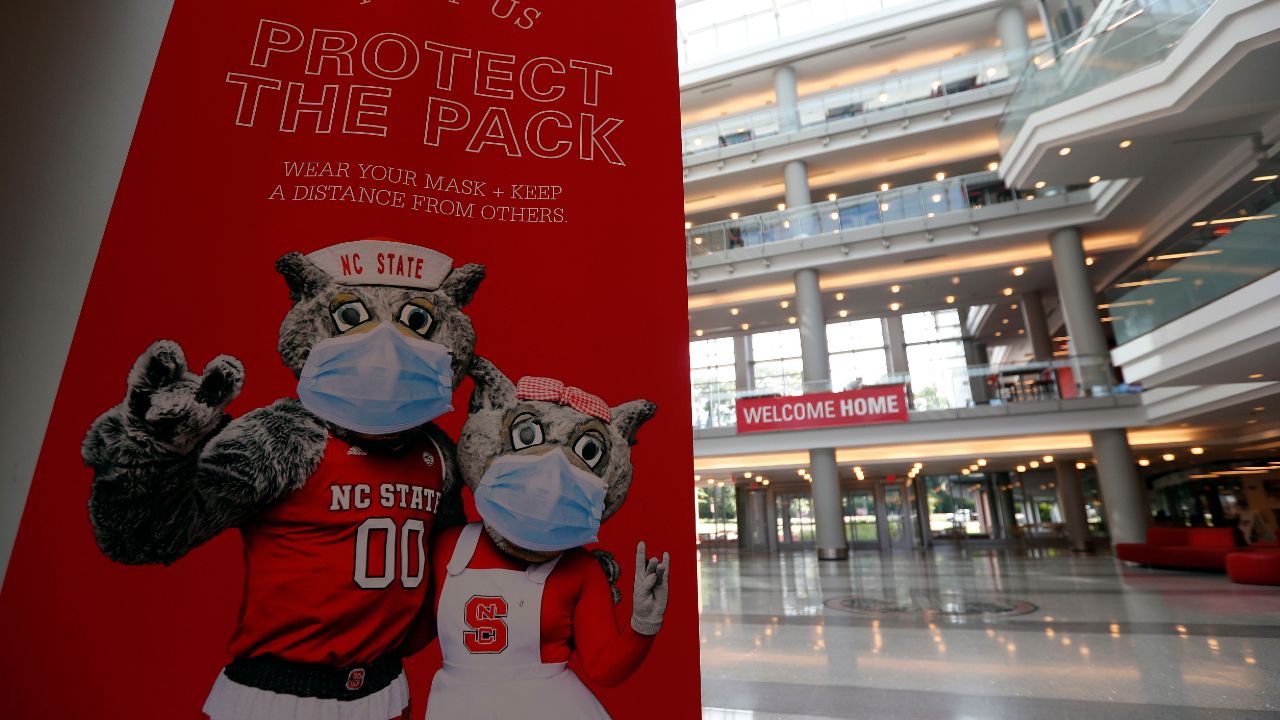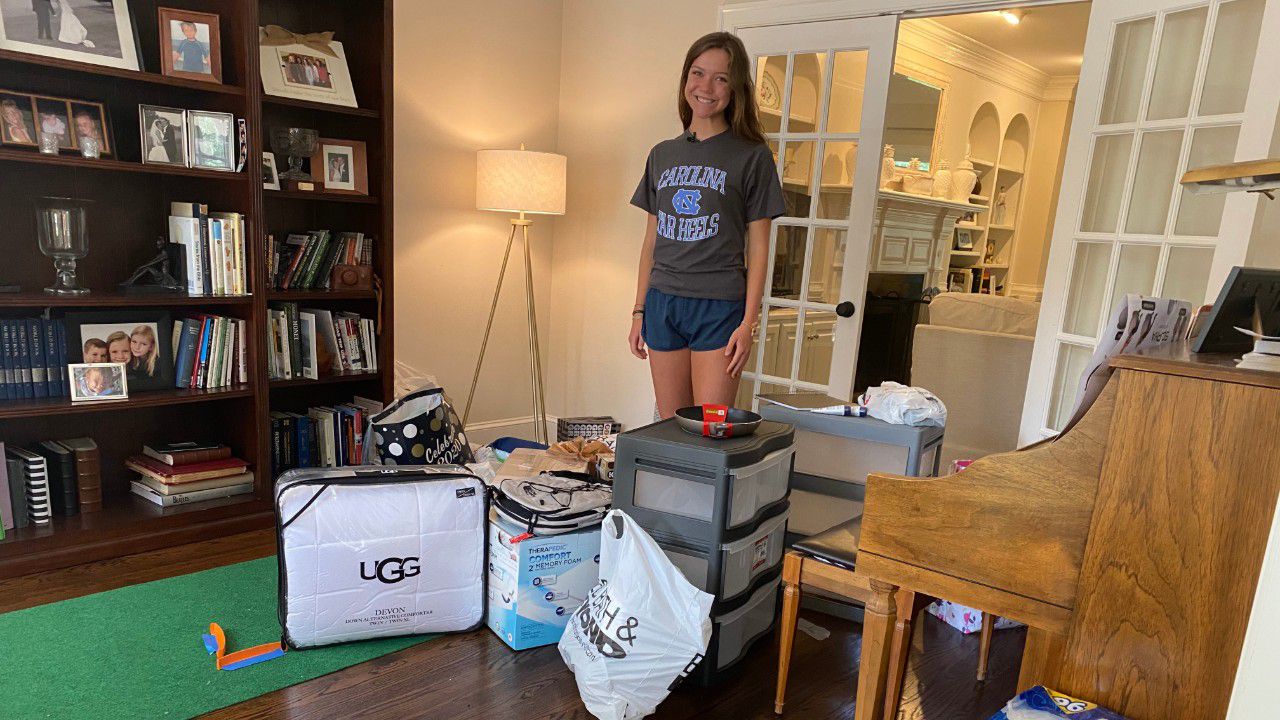NORTH CAROLINA -- Faculty and staff at the University of North Carolina System’s 16 campuses are preparing a class-action lawsuit to delay in-person classes this fall.
As North Carolina continues to record more than 1,500 new confirmed cases of the coronavirus each day, the UNC system is preparing to reopen for the fall semester. While many classes are moving online or will have some combination of virtual and in-person instruction, many are worried the reopened campuses could become new hotspots for the pandemic.
Faculty and staff, concerned about reopening North Carolina’s public universities, are preparing a class-action lawsuit. A lawyer for the UNC employees says there is no way the universities can guarantee they’ll be safe when students return to campus.
In fact, attorney Gary Shipman said, “it is certain” that university employees will get the virus. Statistically, he said, it is likely that some staff and faculty could get very sick or even die from COVID-19.
“As each day goes by,” he said, “those risks increase instead of decrease.”
Shipman said the lawsuit will ask for an injunction to delay reopening the public universities to in-person instruction until the schools can make a plan that will assure employee safety.
On Tuesday, Shipman’s Wilmington-based law firm asked the North Carolina Department of Labor to “request the UNC system to suspend bringing students back to campus.”
The current plans, which differ over the 16 university campuses, do not comply with state law, Shipman argues. He said the universities have a duty to protect their employees from risks like the coronavirus pandemic, but instead they are putting that duty on the staff, faculty, and students by handing out cleaning supplies, masks, and hand sanitizer.
He pointed to North Carolina employment law, which states, “Each employer shall furnish to each of his employees conditions of employment and a place of employment free from recognized hazards that are causing or are likely to cause death or serious injury or serious physical harm to his employees.”
But university administrators say they are doing everything they can to keep people safe on campus.
“The UNC System is prioritizing the health and safety of all of our students, faculty, and staff. We have consulted with the foremost medical professionals and disease researchers, including at our member institutions, and are taking the necessary precautions to ensure our campuses are safe places to teach, study, live, and work,” UNC system spokesman Josh Ellis said in an email to Spectrum News 1.
“No one can accurately predict what this pandemic will have in store for us in the coming months, but our institutions will be ready and prepared for the full range of potential impacts,” he said
What are the universities’ plans?
Many classes this fall will be online, and others that require in-person instruction will use some sort of hybrid model to meet virtually and in the classroom. Universities are reconfiguring classrooms, requiring masks, distributing hand sanitizer and encouraging everyone to stay 6 feet away from one another. Students who are living on campus, including many first-year students, will begin moving into dorms in early August.
At UNC Chapel Hill, students, staff and faculty will get welcome packages with face masks and hand sanitizer. UNC Wilmington students will get two cloth masks when they show up on campus. At UNC Charlotte, administrators decided to delay starting the semester until Sept. 7.
Each campus is using a slightly different approach as administrators work to reopen.
The UNC Board of Governors, the governing body for the university system, instructed campuses to reopen for the fall semester.
Speaking to the Board of Governors last week, UNC infectious disease specialist Dr. David Weber said that cases of the coronavirus were rising dramatically in 18- to 22-year-olds . He said that increase was because businesses started to reopen and people were not social distancing, leading to a spread in the virus.
But, Weber told the board, it is possible to reopen campuses safely as long as everybody can keep that six-feet of distance, wear face masks, wash their hands frequently and disinfect surfaces.
UNC Wilmington creative writing professor Wendy Brenner said she plans to teach her big intro class with 120 students all online, but will still have to be on campus some to work with her graduate students.
She said teaching 120 students over Zoom with be “a special kind of challenge” and wants to get back in front of her students as soon as possible. “Everybody is trying to figure out how to do this safely, but the answer is ‘you can’t,’” she said.
What the CDC says about reopening campuses
The Centers for Disease Control and Prevention guidelines for reopening colleges and universities breaks down options for campuses based on risk. The lowest risk is to move all classes online and keep dorms closed.
Under “more risk,” the CDC says, schools can have “small in-person classes, activities, and events. Individuals remain spaced at least 6 feet apart and do not share objects (e.g., hybrid virtual and in-person class structures or staggered/rotated scheduling to accommodate smaller class sizes).” The CDC says dorms should be at reduced capacity and common areas should be closed.
The highest risk is to reopen residence halls at full capacity, including common areas like kitchens. The highest risk in the classroom, the CDC says, is, “Full-sized in-person classes, activities, and events. Students are not spaced apart, share classroom materials or supplies, and mix between classes and activities.”
UNC system school plans for teaching are between the low risk to higher risk category, but the plans for reopening dorms falls closer to the highest risk.
Other models to reopen universities
Jay Smith, a history professor at UNC Chapel Hill, said the administration there is “proceeding full speed ahead” to reopen campus. He said he was particularly concerned about the housing plans that would put students back in dorms with little room for social distancing.
“We can’t simply sacrifice the health and safety of people in our community,” he said.
Smith pointed to the plans for University of California schools, which allows each campus to make their own plans. UC Berkeley, for example, is opening with fully remote instruction for the fall semester, while also planning to allow limited in-person classes if things improve with the coronavirus.
Other campuses, like UC San Diego, plan to have 30 percent in-person classes in the fall, and are also reopening residence halls but with fewer people in dorm rooms. Students will be tested for free when they move to campus and will be screened daily for symptoms.








